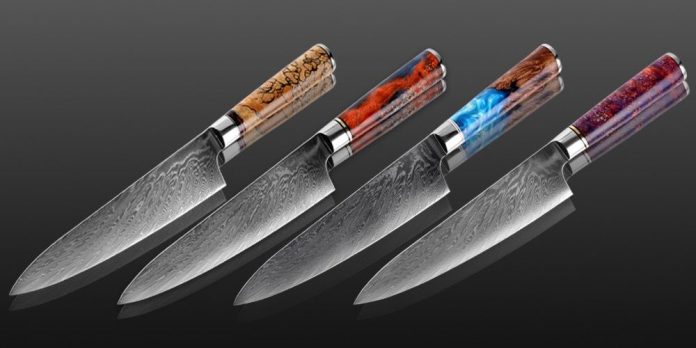While the chef’s knives are essential in performing the kitchen tasks perfectly, understand that the blade material plays a big role in durability and maintenance. When you plan to upgrade your kitchen knife sets, it is important to learn the basic materials used to construct the blades to store them in the right conditions. When choosing the blade materials, you will consider the period it stays sharp, the ease to sharpen, and the corrosion rate. Here are the primary materials commonly used to manufacture knife blades.
High-Carbon Steel
For many years, manufacturers have been using high carbon steel for manufacturing knife blades. The material is characterized by toughness and can stay sharp for a long time when kept under fair stress. However, the material is prone to breaking when you exert more pressure more frequently. Additionally, high carbon steel is prone to corrosion when it gets into contact with acidic food materials. Foods like tomatoes and citrus fruits can discolour the blade but do not affect its quality. Therefore, users must observe proper care and maintenance practice by cleaning thoroughly after using the knife to prevent rusting and discolouration of the blade.
High Carbon Stainless Steel
The material is a combination of carbon steel and stainless steel attributes. Here, a significant number of carbons components are responsible for the toughness of the blade. Also, the carbon gives room for holding the knife’s edge, although not as much as the high carbon steel could do. This is because the high carbon steel contains chromium, reducing the chances of developing stains and rust in extreme conditions.
Stainless Steel
Stainless steel is famous for its ability to resist discolouration and rust. However, the material can develop some stains if it is not handled correctly. Exposing this blade material to conditions such as salty water, acidic material like vinegar or lemon juice, and hard water will affect the extreme environment for discolouration and rusting. Users are supposed to clean the stainless steel thoroughly with the correct leaner, like the abrasive powder. Stainless steel is also known to retain sharpness slightly longer, but its constructions do not usually produce edges as sharp as those from high carbon steel materials.
Titanium
The titanium blades are usually constructed from the combination of titanium and carbide. The carbides are responsible for allowing the blade to be heat treated during the knife manufacturing process. Consequently, the construction of the titanium blade results in a solid and durable product compared to other materials. Titanium material is lightweight, corrosion-resistant, water-resistant, easy to sharpen and hold the edge longer. It is also a more flexible blade material, making it a good material for constructing knives for filleting and boning.
Ceramic
Ceramic is a combination of zirconium oxide and aluminium oxide. Even though the zirconium is a complex material nest to diamonds, the titanium blades are brittle and prone to chip or break. The edges of titanium knives are usually thinner than those from steel, making it easier for tasks that involve cutting through items.










